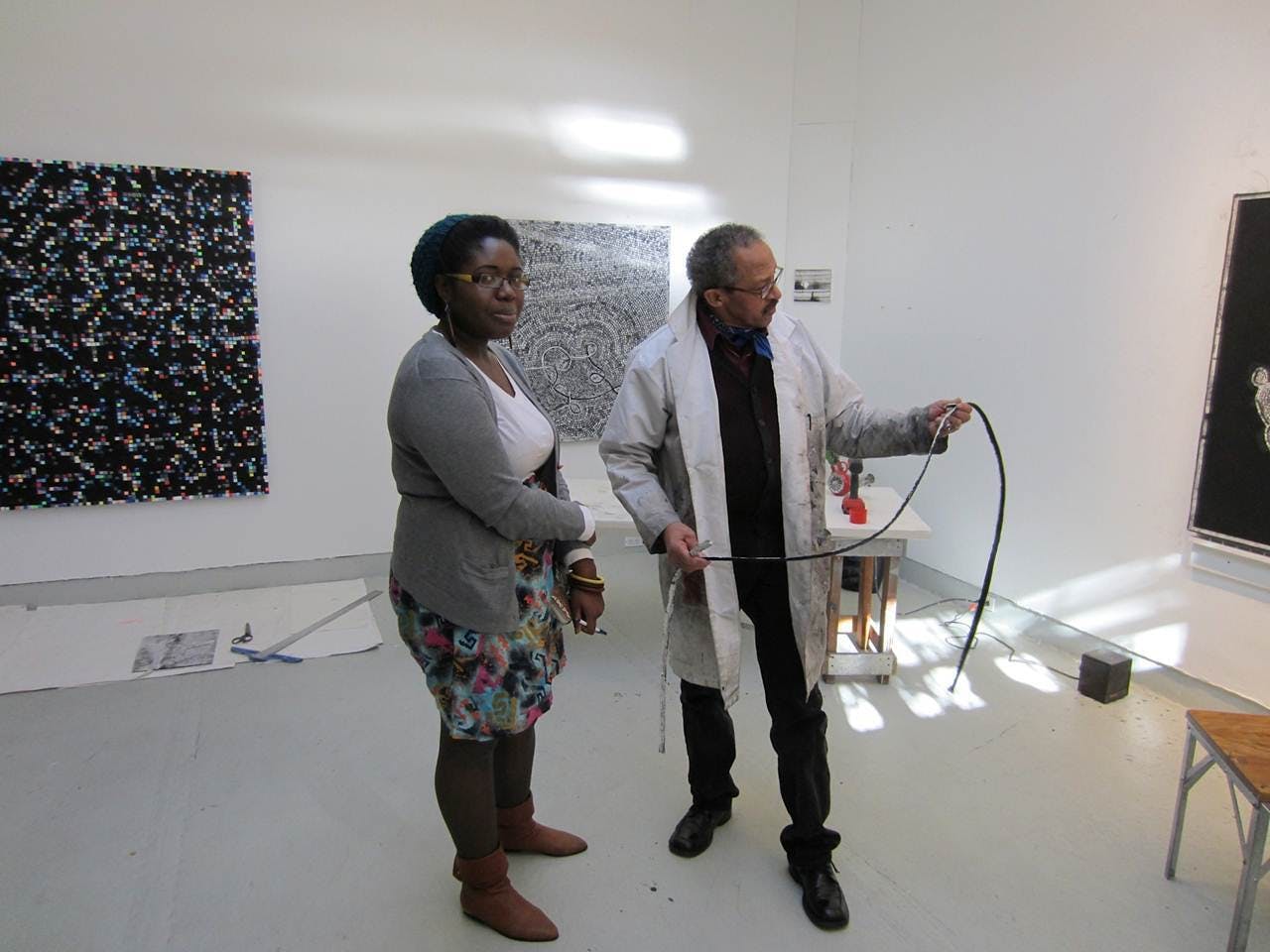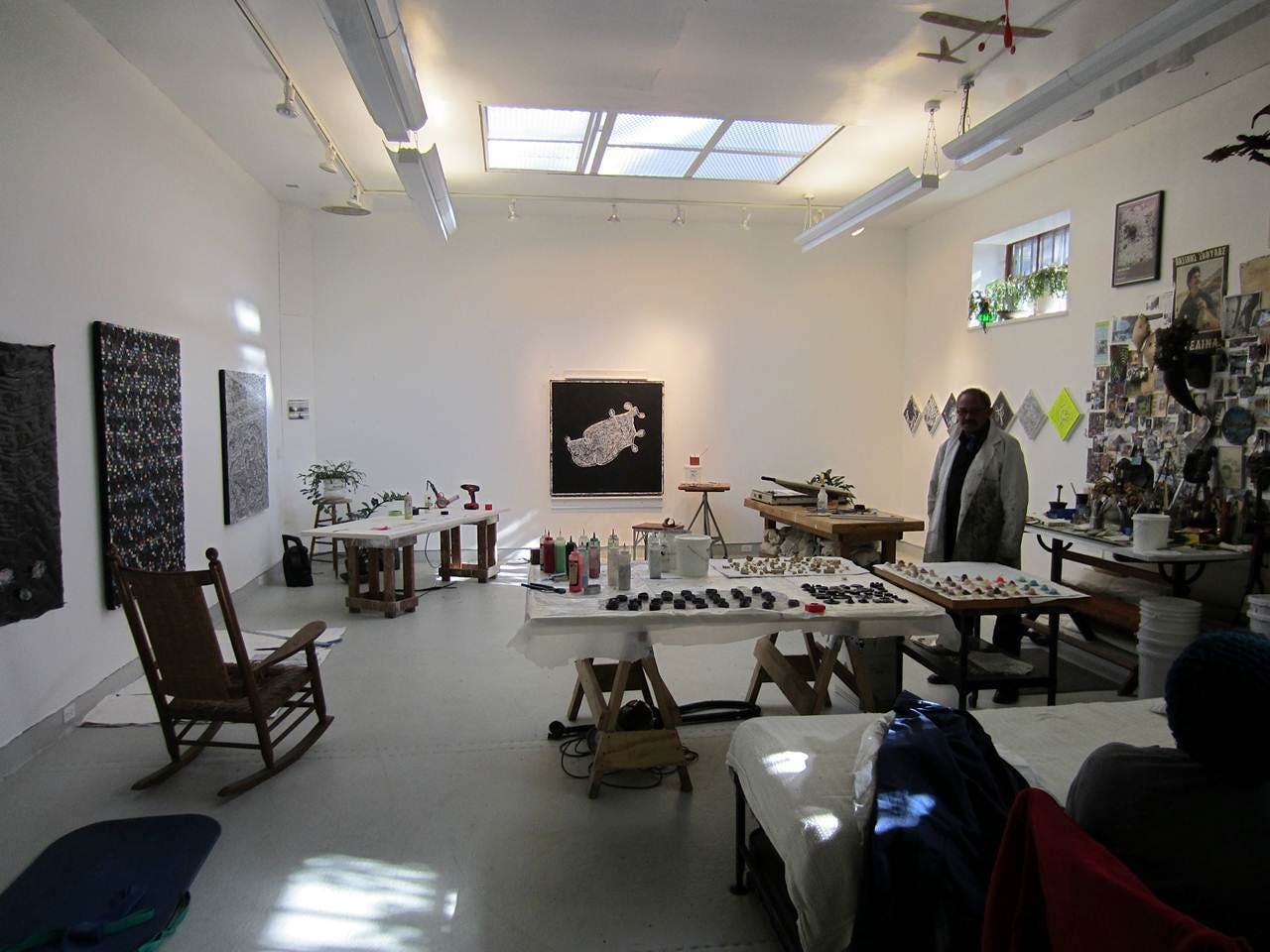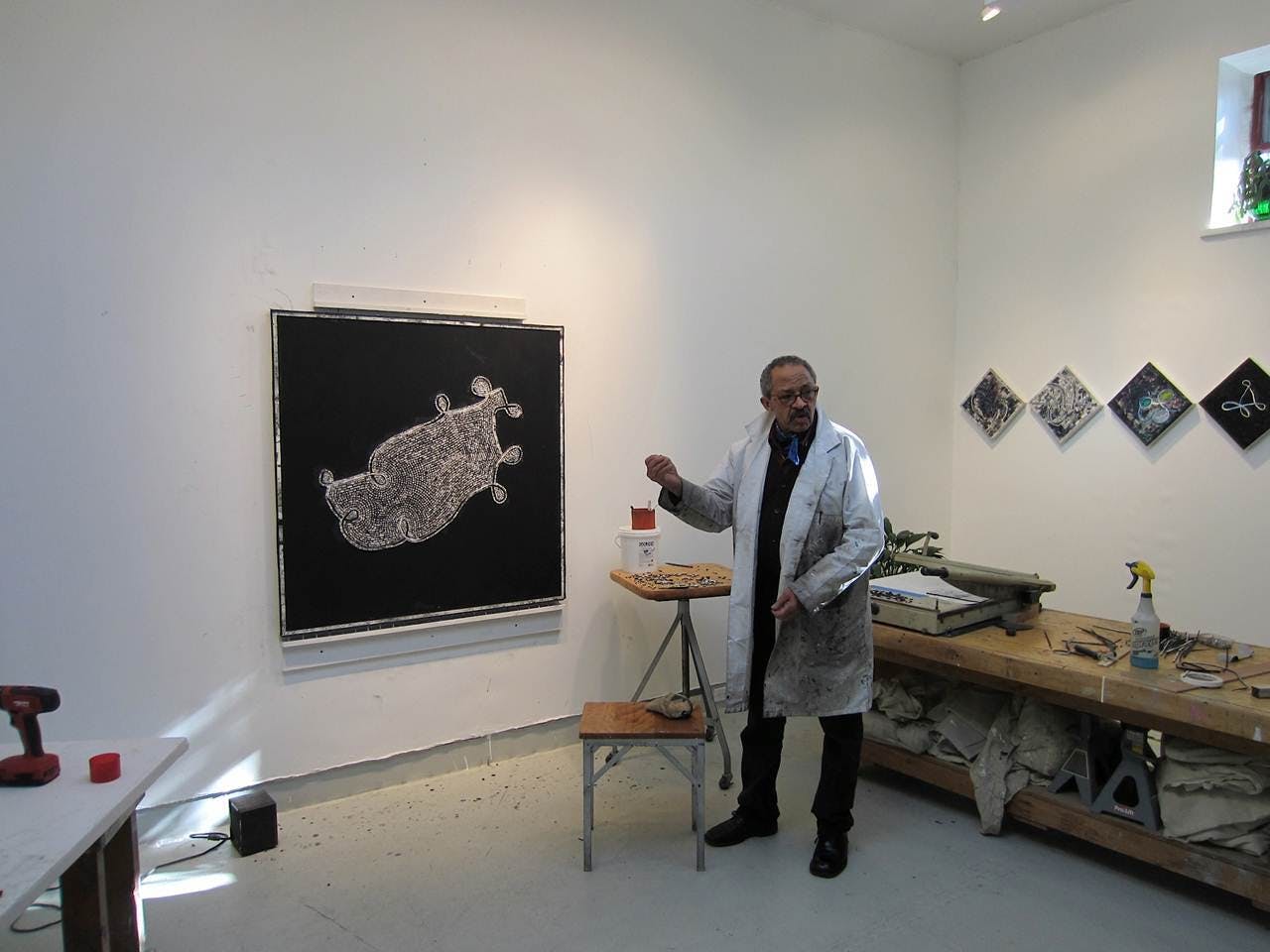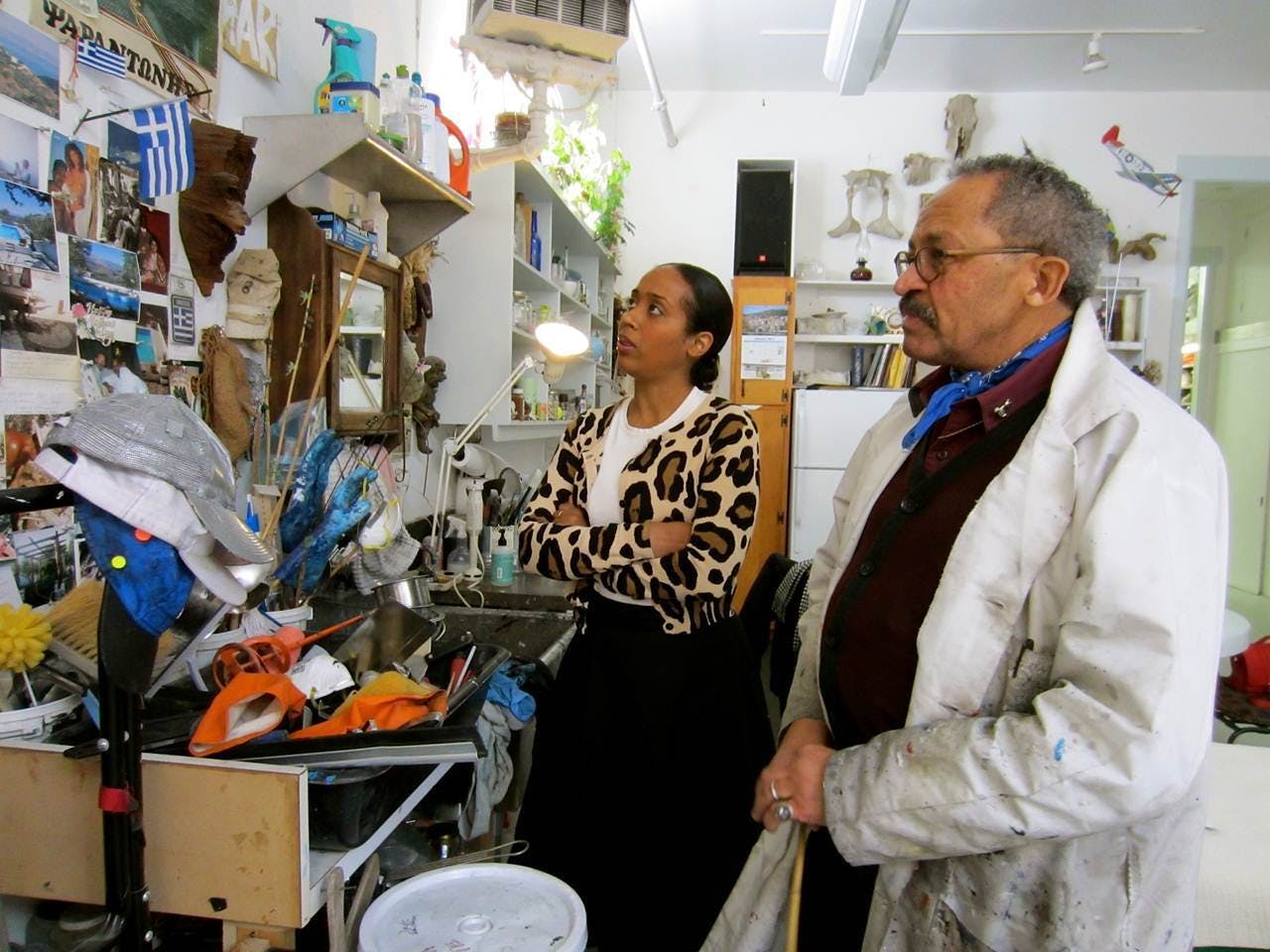In the Studio with Jack Whitten
On a chilly winter afternoon, Assistant Curator, Naima J. Keith and I dropped in on world-renowned and revered abstract artist Jack Whitten. Intent on leaving the bustle and chaos behind in Manhattan, Jack converted an old firehouse on a quiet street in Woodside, Queens into his studio 9 years ago.
As we stepped into his spacious main room that has been arranged as part gallery/workspace on one side and living/domestic space on the other, our eyes were immediately drawn to a wall covered with photographs, posters, bones, and wood pieces. He began telling us about his love for deep sea fishing and Crete, which is where many of the skeletons arranged throughout the workspace came from. There was an image of Nkisi Power Figures from Kongo, which were the root of inspiration for all of the impeccable wooden sculptures that Whitten has been creating since the 1960s.
Whitten, who is known for his abstract painting, wooden sculptures, and mosaics, produces much of his work from raw materials and found objects. His current project, “The Loop Series,” allows him to unite his background in science with an acrylic painting technique rarely used. In these 3-dimensional paintings, Whitten uses a mathematical formula to find the circumference of a circle. He then uses this number to measure out tesserae—sheets of dried acrylic paint—strips, which he then loops to a number representative of the many dimensions of the universe. This looped circle becomes the focal point of the grander mosaic piece.
Whitten is currently featured in a 10 page photo spread in Artforum Magazine. On Thursday, March 8, he will be here at the Studio Museum for a conversation with Assistant Curator, Naima J. Keith. As abstraction makes its rise back onto the main stage of the contemporary art world, Jack Whitten will be there producing the same innovative pieces that he has been for over 40 years. He uses his own history, the cultural relics of those around him, and his perspective of the seen and unseen to display the commonality of us all through his art.



